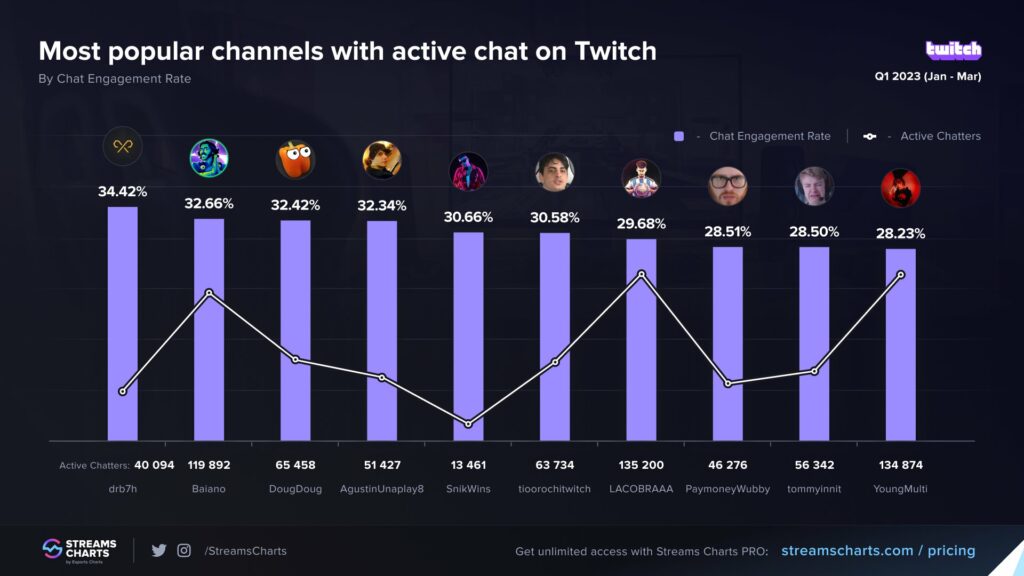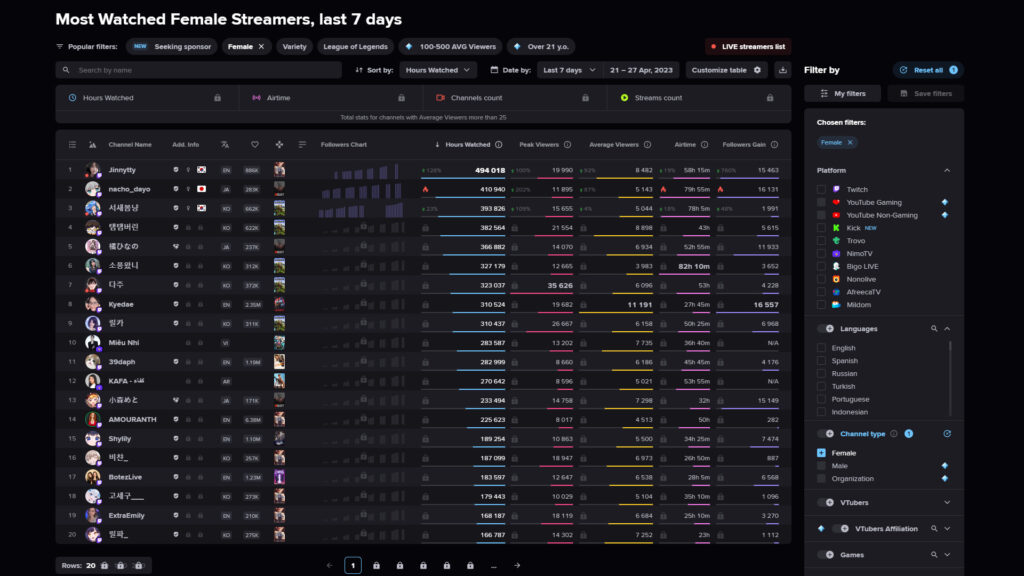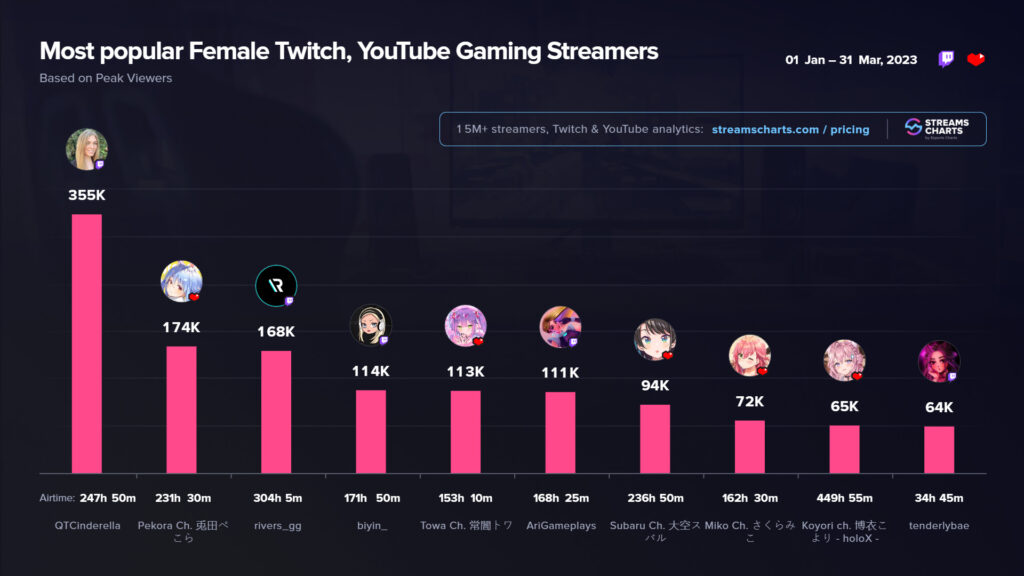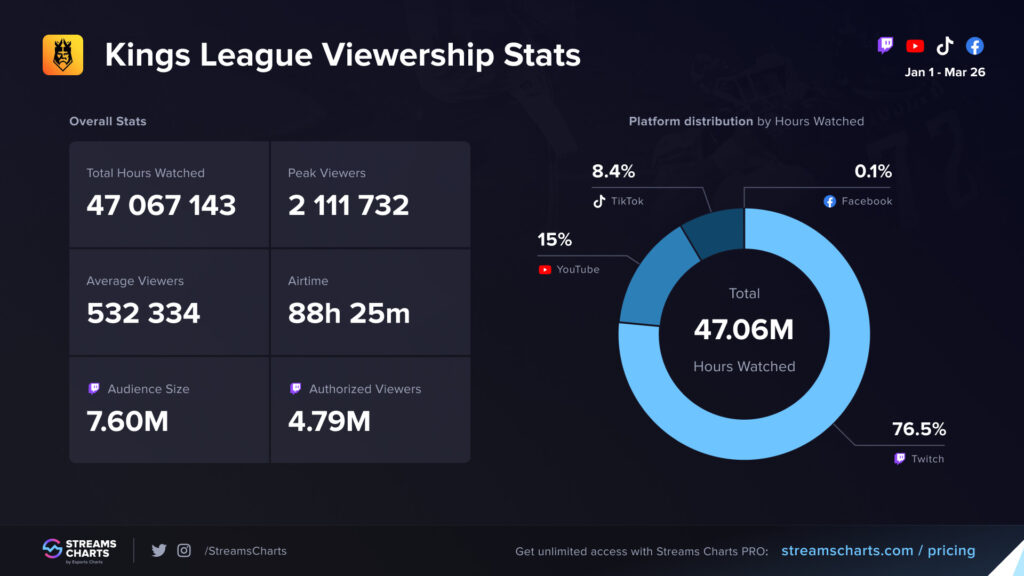In an interview with esports.gg, Streams Charts shared insights on how the platform works, its impact on the livestreaming market, and more.
If you're into streaming and viewer counts, then you've probably heard of Streams Charts. The platform lets users analyze metrics for channels, clips, communities, games, and streams.
It gathers data from popular broadcasting platforms to deliver streaming insights. But how did the Streams Charts platform get its start, how does it work, and what's the impact of it on the livestreaming market?
Nazar Babenko, the product manager at Streams Charts, sat down with esports.gg for an interview to answer these questions and more. Artyom Odintsov, the CEO and co-founder of Streams Charts and Esports Charts, also shared the platform's origin story with us.
Streams Charts interview
By around 2019 and 2020, Odintsov's team already had a lot of experience with streaming data thanks to Esports Charts. The latter platform found its footing in 2016 with the League of Legends World Championship, where simultaneous livestreams occurred during the tournament.
Esports Charts later expanded by collecting data for other games. According to Odintsov, this meant Streams Charts emerged quite logically when the team expressed interest in creating a new product.
"Basically, now we continue to follow the same goals as at the beginning: accessible and understandable streaming analytics," Odintsov told esports.gg.

Women in gaming, VTubers, and going beyond Twitch
In addition to providing streaming analytics to popular Twitch categories such as League of Legends, VALORANT, and Dota 2, Streams Charts also has a dedicated section for women. This is in the form of a filter, and Babenko said that it allows users to identify market opportunities based on activity, reach, and audience behavior.
"Thousands of brands use our data on a daily basis to find new streamers," Babenko continued. "The task is not only to help a brand or agency choose the right streamer, but also to support the streamers themselves: both on a large scale — for example, female streamers rankings to support women in gaming — and at the local level — all kinds of ratings by countries or casual games."

Most of Streams Charts' filters are chosen based on internal expertise, but they're also a response to trends and user requests. For example, the platform introduced a filter for VTubers because of the growing trend of these content creators.
"The trend of virtual YouTubers is growing every year, which can be seen in the latest rating of the most popular female streamers, where most of the representatives are VTubers," Babenko explained.

As of now, Streams Charts works with data from 10 livestreaming platforms. Babenko also mentioned data from more than 20 million channels and billions of streams. In addition to giants such as Twitch, YouTube, and Facebook Gaming, Streams Charts also looks into trends from other regions. This allows for data from platforms like AfreecaTV, Bigo Live, Kick, Mildom, NimoTV, Nonolive, and Trovo.
"This shows that streamers can easily compete with esports events and bring in new audiences."
Related articles
Streams Charts and its impact on the livestreaming market
In terms of Streams Charts' relevance in the livestreaming market, Babenko noted that a big boom happened during the COVID-19 pandemic. Since most people stayed at home, streamers gained new audiences.
Babenko shared insights about the evolution of livestreaming as well. Simply playing a game or just chatting is no longer enough. Instead, livestreamers must now find unique ways to attract viewers and sponsors.

"The viewer wants a show," he said. "That's why we've seen a lot of offline or joint online events from streamers lately."
An example of this is the Kings League event that happened in February 2023. The event showcased both content creators and ex-professional football players. According to Babenko, the grand final drew around 92,500 spectators at the stadium itself.

In total, the Kings League event resulted in more than 47 million hours watched, which rivaled tournaments such as VALORANT Champions Tour (VCT) LOCK//IN, ESL Pro League Season 16 for CS:GO, and even the League of Legends EMEA Championship (LEC) Spring 2022 event for League of Legends.
"And all this despite the fact that the airtime of these events is higher than that of the Kings League," Babenko said. "This shows that streamers can easily compete with esports events and bring in new audiences."
Stream smarter, not harder
Babenko believes that content creators can also stream smarter as well. This can be done with the power of analytics since key metrics help creators make better decisions.
"YouTube content creators have already figured this out: they analyze the metrics of their videos to understand what kind of content the viewer is getting," he explained. "In livestreaming, streamers are also starting to come to analytics because sponsors and agencies need numbers."
As for parting words, Babenko gave a shoutout to Streams Charts' offering that supports those in education. He said that students and educators often approach the platform for the purpose of research, dissertations, and more.
"We are open to cooperation with universities and will be happy to help with any questions," he added.
That's all for now. Stay tuned on esports.gg for more news and updates!